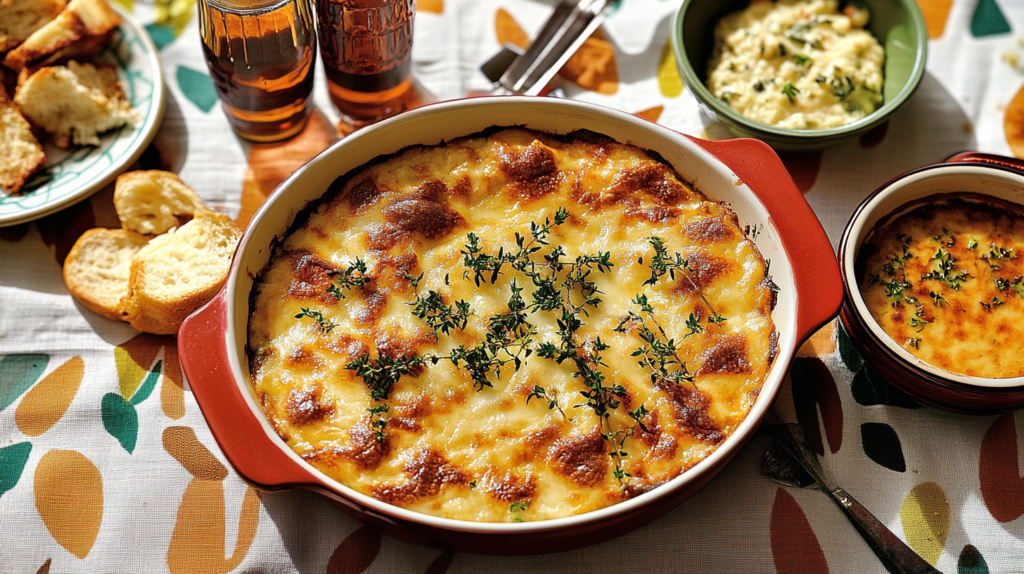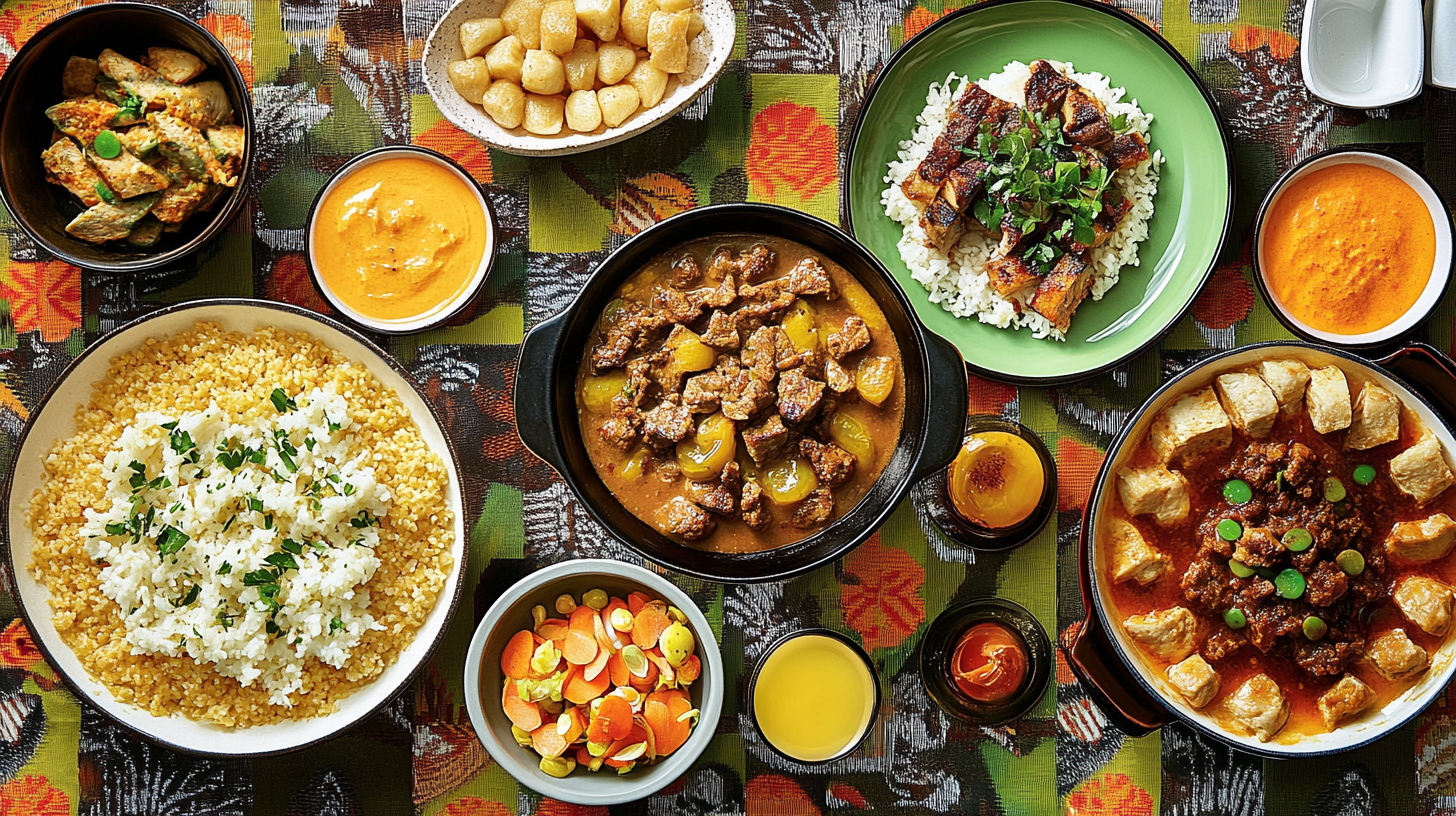In an age of culinary innovation and fast-food chains, there exists a treasure trove of recipes that tell tales of a simpler time—where dishes were crafted with patience, seasoned with tradition, and meant to be savored slowly. These old recipes not only deliver flavors that are hard to come by in modern cuisine but also connect us to the heritage of home-cooked meals enjoyed around a family table. Embarking on an “old recipes dinner” is not merely a gastronomic journey; it’s a passage through the traditions, stories, and ingredients that shaped how we eat today. This article takes a deep dive into the time-honored dishes that continue to define comfort, nostalgia, and timeless taste.
1. The Essence of Heirloom Cooking: What Makes Old Recipes Special?
Rooted in Tradition and Memory
Heirloom recipes are like culinary heirlooms passed down generations, often handwritten on faded paper or recounted from memory. These recipes are not only practical but rich in history. They tell the story of what our ancestors valued, the ingredients they had access to, and the meals that brought their families together. The essence of these dishes often lies in simplicity—flavors that don’t rely on processed ingredients or complex techniques but on quality, fresh produce and authentic methods of preparation. Rooted in tradition, these recipes create a direct link between the past and present, allowing us to experience history through taste.
From Scratch: The Lost Art of Homemade
Modern cooking has become quick and convenient, yet, for those familiar with heirloom recipes, there is unmatched value in making things from scratch. Be it the slow-simmered soups, the hand-rolled bread, or the tender stews, cooking from scratch preserves the original flavors, textures, and nutritional value of each dish. Making meals from scratch cultivates a sense of craftsmanship in the kitchen, a ritual that transforms cooking from a chore into an art form. In old recipes, ingredients are allowed to shine in their own right, resulting in flavors that feel like home.
Community-Bound Recipes: Ties That Bind
Old recipes often come from community cookbooks, local gatherings, and cultural festivals, embodying the spirit of shared meals and collective cooking knowledge. These recipes transcend the individual kitchen and bring communities together through shared memories and flavors. Each recipe carries the unique signature of the family or community it originates from, revealing distinct cultural influences, local ingredients, and traditional preparation methods. This communal connection fosters a sense of belonging and nostalgia, reminding us that food is as much about fellowship as it is about sustenance.
2. Comfort Soups from the Past

The Timeless Appeal of Broths and Stews
Soups, broths, and stews are foundational dishes in old recipe collections. They were often created to stretch ingredients, combining various elements to create a warming and filling meal. Whether it’s a hearty chicken soup, a robust beef stew, or a simple vegetable broth, these dishes offer layers of flavor and comfort. Slow-cooking techniques allow the ingredients to meld, releasing flavors that are both deep and satisfying. The extended cooking time transforms simple elements into a harmonious blend of aromas and tastes that evoke the cozy warmth of home.
Healing and Nourishing Properties
Historically, soups and stews were valued not only for their taste but also for their restorative qualities. Ingredients like bone broth, rich in collagen, and root vegetables packed with vitamins, offer more than just flavor; they provide essential nutrients that support immunity and overall health. Many of these soups were also considered tonics, healing remedies that could alleviate ailments from colds to digestive issues. By revisiting these dishes today, we’re not only experiencing a taste of the past but also benefiting from natural, time-tested sources of nourishment.
Regional Variations: The Flavors of Local Tradition
Different regions bring unique twists to soup recipes, influenced by the availability of local ingredients and the cultural significance of certain flavors. In some areas, seafood chowders are a staple, while in others, lentil stews or tomato-based broths define the culinary landscape. Exploring regional soup recipes introduces us to new flavor profiles and cooking techniques that have been perfected over centuries. These variations celebrate the diversity of old recipes, revealing how food can simultaneously unify and distinguish communities.
3. Rustic Bread: The Heart of the Table
Reviving Ancient Fermentation
Sourdough, one of the oldest bread varieties, has seen a revival in recent years, with more home bakers embracing the process of natural fermentation. Unlike commercial yeast, sourdough relies on wild yeasts and bacteria, creating a complex flavor and a chewy, satisfying texture. This ancient fermentation method not only enhances the bread’s taste but also improves its digestibility. The art of sourdough baking is as much about patience as it is about technique, allowing the dough to ferment slowly to achieve the ideal balance of tang and tenderness.
Heirloom Grains: A Taste of History
Baking bread with heirloom grains like spelt, einkorn, or emmer introduces a rich, nutty flavor and a dense, hearty crumb. These grains, which have remained largely unchanged over centuries, offer a glimpse into the flavors our ancestors enjoyed. Unlike modern wheat, heirloom grains are often less processed and contain higher levels of protein and essential minerals, making them both a flavorful and nutritious choice. Each bite of bread made with heirloom grains carries the essence of old-world flavors, connecting us to a time when bread was truly the staff of life.
The Tradition of Hand-Kneaded Dough
There is something profoundly satisfying about the process of kneading dough by hand, feeling the ingredients come together to form a cohesive, pliable mass. Traditional bread-making techniques prioritize hands-on methods, allowing bakers to develop a feel for the dough’s readiness. This tactile connection creates a sense of intimacy with the recipe, fostering a deeper appreciation for the labor and care that goes into each loaf. Hand-kneading is both a meditative and rewarding experience, bringing us closer to the roots of baking.
4. Hearty Stews: A One-Pot Masterpiece
Celebrating Simplicity with Meat and Vegetables
Old-fashioned stews are the epitome of simplicity, combining a few choice cuts of meat with an assortment of vegetables in a single pot. The slow cooking method allows the flavors to meld, creating a dish that’s both flavorful and deeply nourishing. These stews, often prepared in large batches, were a way for families to maximize resources, stretching a small amount of meat and vegetables into a filling, satisfying meal. Each spoonful is a reminder that culinary excellence doesn’t always require elaborate ingredients or techniques.
Slow Cooking: The Key to Flavorful Depth
Slow cooking is a cornerstone of traditional stews, allowing tough cuts of meat and fibrous vegetables to break down into tender, melt-in-your-mouth pieces. The long cooking time extracts natural flavors, creating a broth that is rich, savory, and full of character. This cooking method is as much about the experience as it is about the result; it requires patience, anticipation, and a willingness to let the ingredients work their magic over time. Slow-cooked stews exemplify the essence of old recipes, valuing process over speed and depth over convenience.
Aromatic Spices for Bold, Earthy Flavors
Many old stews are seasoned with a blend of aromatic spices that enhance the dish without overpowering its natural flavors. Herbs like thyme, rosemary, and bay leaves, along with spices like peppercorns and allspice, add a fragrant complexity to the stew, highlighting the richness of the meat and vegetables. This careful use of spices is a hallmark of traditional cooking, where seasoning complements rather than dominates, allowing each ingredient to shine. By recreating these spice blends, we pay homage to the skillful seasoning techniques of the past.
5. Timeless Desserts: Sweet Conclusions
Puddings and Custards: A Simple Indulgence
Puddings and custards, often made with just a handful of ingredients, offer a creamy, comforting dessert experience. These desserts were a staple in many households, created from everyday items like milk, eggs, and sugar. Their simplicity belies a depth of flavor that is both satisfying and nostalgic, bringing back memories of childhood treats and family gatherings. In a world of complex, multi-layered desserts, there is something refreshing about returning to these straightforward, yet utterly delightful, confections.
Fruit-Based Delights: Seasonal Sweetness
Fruit-based desserts, such as pies, tarts, and cobblers, celebrate the natural sweetness of seasonal produce. These desserts highlight the flavors of fresh fruits like apples, berries, and peaches, often requiring minimal added sugar. This reliance on natural sweetness creates a balanced dessert that feels indulgent yet wholesome, capturing the essence of farm-fresh ingredients. Each bite of a fruit dessert is a celebration of the harvest, a taste of nature’s own sweet bounty that is both delicious and nourishing.
Spices of Warmth: Cinnamon, Nutmeg, and Clove
Traditional desserts frequently incorporate warming spices like cinnamon, nutmeg, and clove, which add a cozy, aromatic quality to each bite. These spices, often reserved for festive occasions, lend a sense of celebration and warmth to desserts, enhancing flavors and creating a comforting sensory experience. The addition of these spices transforms simple ingredients into something magical, embodying the spirit of seasonal gatherings and family traditions. Each bite of a spiced dessert is like a warm hug, evoking the cherished flavors of home and heritage.

